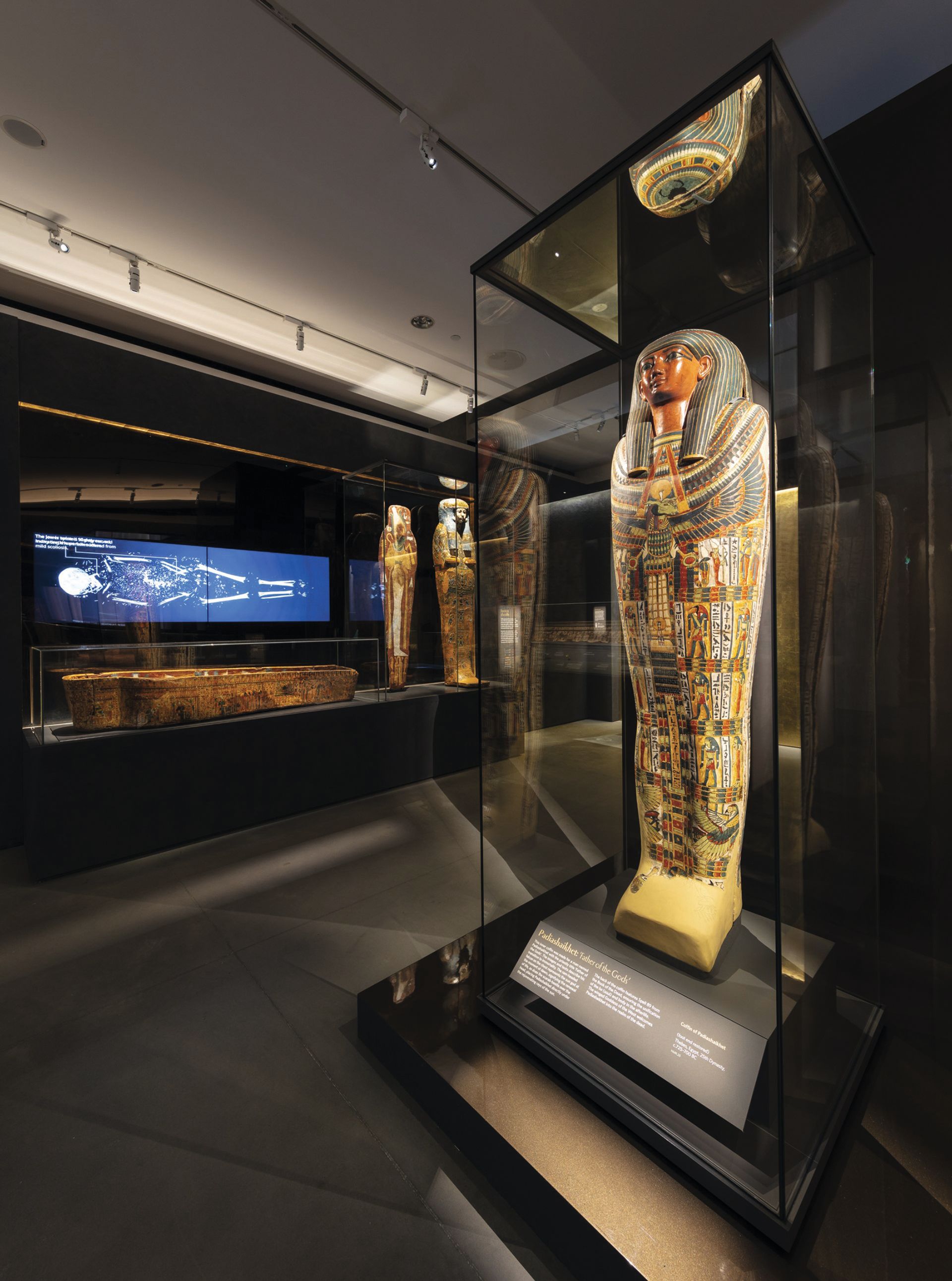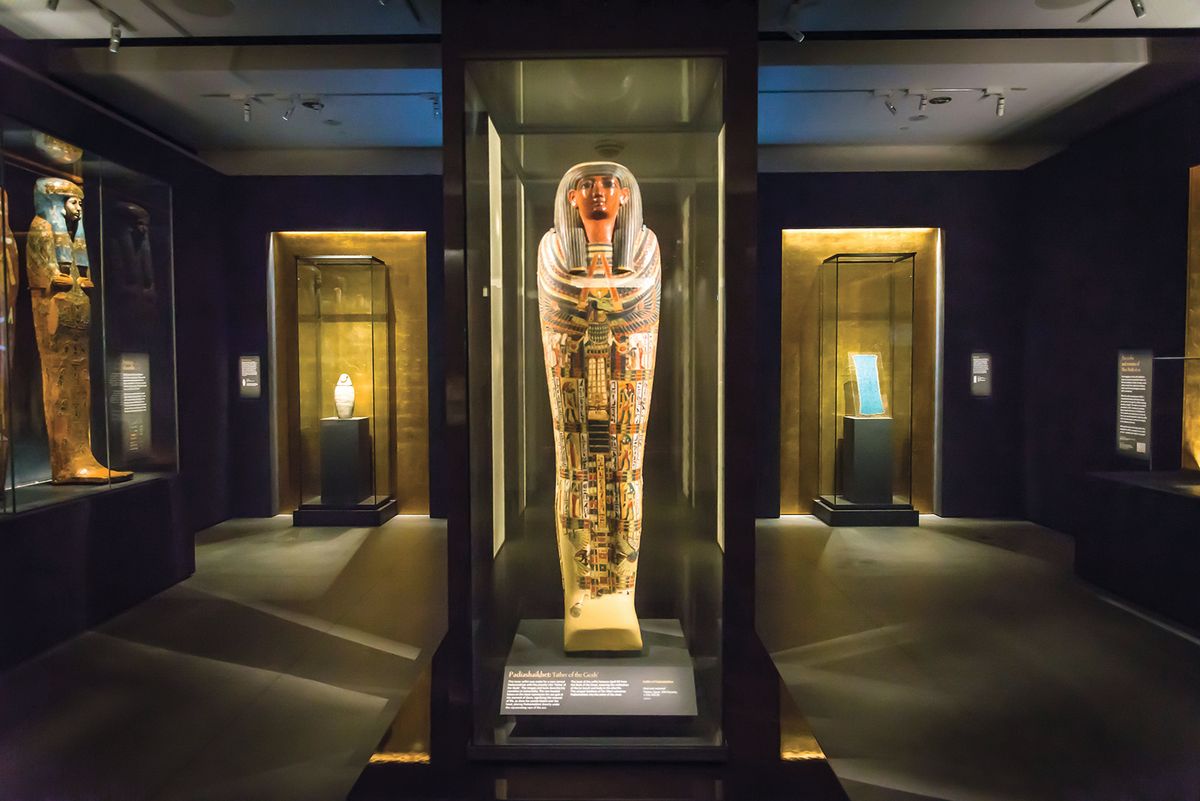An unwrapped mummified foot in an old biscuit tin is among a small number of Ancient Egyptian body parts removed from display last month, as a Sydney museum grapples with the evolving ethics of museology.
A mummified head was also removed from the exhibition halls of the Chau Chak Wing Museum at Sydney University on the advice of the senior curator antiquities and archaeology, Melanie Pitkin.
In addition to these display adjustments, the museum will rename its Mummy Room to remove popular culture connotations which have nothing to do with the serious study of ancient Egypt.
A name such as The House for Eternity would better reflect the cultural imperatives underpinning mummification in Ancient Egypt, Pitkin tells The Art Newspaper. No renaming will take place until the Egyptian community both in Australia and in Egypt has been consulted.
Pitkin says the Chau Chak Wing Museum is leading the world in developing and implementing new protocols surrounding the presentation of Egyptian mummified human remains. “It’s a hot topic. The academic discourse has been going on for probably ten years, but for museums to implement changes it’s been a really slow process,” Pitkin says.

The museum is still exhibiting the completely wrapped mummified body in the coffin of Meruah Image:© Chau Chak Wing Museum
Before joining the Chau Chak Wing in February 2022, Pitkin worked as a research associate for Egyptian antiquities at the University of Cambridge’s Fitzwilliam Museum. Before that, she had worked for more than a decade at the Museum of Applied Arts and Sciences, Sydney.
No consensus
Pitkin says that when she started work at the Chau Chak Wing Museum, she had been surprised to see mummified body parts on display in the new Egyptian galleries. At the same time, she was aware that international museums lacked a general consensus on how best to display and refer to Ancient Egyptian mummified body parts.
“There are no clear guidelines internationally or at local institution levels,” she says.
However, the Chau Chak Wing has decided, in new guidelines just published on its website, that it will not display exposed human remains. “Only fully wrapped/covered Ancient Egyptian mummified human remains will be considered for display,” the guidelines say. “We will use language which reflects that these human remains, no matter how many thousands of years old, are the bodies of once living people.”
The museum is moving away from using the word “mummy” in favour of phrases such as “Ancient Egyptian mummified human remains” and “Egyptian mummified remains”.
Pitkin says museums with a focus on Egyptology mainly look to the International Council of Museums’ code of ethics for guidance around the display of contentious and potentially offensive material. But the language of the code is vague. It calls for the respectful and dignified display of mummified human remains, but lacks specifics around what that means in practice, Pitkin says.
During 18 months of research and consultation, the Chau Chak Wing conducted surveys of the public’s tolerance for the display of mummified items. The findings helped shape the museum’s decision to remove the “disarticulated” body parts, including the foot, as offensive and tainted by colonialism.
While the survey found that 79% of respondents had no issue with seeing human remains on display in museums, there were important caveats. These included that any remains on display should not be within one or two generations of museum visitors.
Remaining on display at the Chau Chak Wing are the completely wrapped, mummified remains of the body of an unidentified adult inside the coffin of Meruah, and the body of a young boy named Horus (around 100AD).
The 3D visualisations generated from scans of these objects are also on display.
The crux of the issue is the lack of international consistency in best practice around the display of human remains, Pitkin says.
She adds that the foot in the biscuit tin was donated to the museum before the 1960s. Somewhat gruesome objects of that nature were bought as souvenirs by travellers to Egypt.
Named for its benefactor, the Chau Chak Wing is an amalgamation of Sydney’s University’s three previous museums, whose holdings included ancient Egyptian material and works of art.


